We all know the value of loyal customers. Repeat customers are cheaper to acquire than new leads, and they spend more over time. They’re also more likely to recommend your brand to friends – and while it’s hard to put a figure on that, we do know that word of mouth marketing is one of the most effective strategies out there.
However, as consumers have more and more choices, it’s harder to retain customers and build loyalty. Faced with so many options, people don’t make rational economic choices between different products. Instead, they rate brands on more instinctive criteria. I call these the three Es.
Modern consumers are interested in:
- Ethics. What are your brand’s values? What do you stand for? Do you have a sustainable supply chain? Do you treat your employees well? Shoppers want to know.
- Experiences. Modern consumers, especially Gen X and Millennials, are more interested in experiences than products. Your in-store ambiance, website design, and customer service matter more than ever.
- Emotions. People buy from brands that they identify with. They’re looking for products that make them feel something. They respond well to marketing and follow-up which offers emotional rewards.
In this article, we’re going to focus on that final point: emotions. Loyalty itself is an emotion. So when we’re talking about how to build customer loyalty, we’re going to have to use a little emotional intelligence.
Here’s how to tap into your customers’ emotions and build a customer loyalty program with emotional rewards!
Different types of rewards and incentives
Most customer loyalty programs are based on rewards or incentives. These incentives are designed to reinforce positive behavior, such as completing a purchase or writing a product review.
Think about supermarket or gas station points, or beauty and fashion shops fidelity programs: the more you spend, the more perks or virtual coins you get to exchange for prizes or rewards. That’s one way to retain customers and get more value from them, by offering economic incentives.
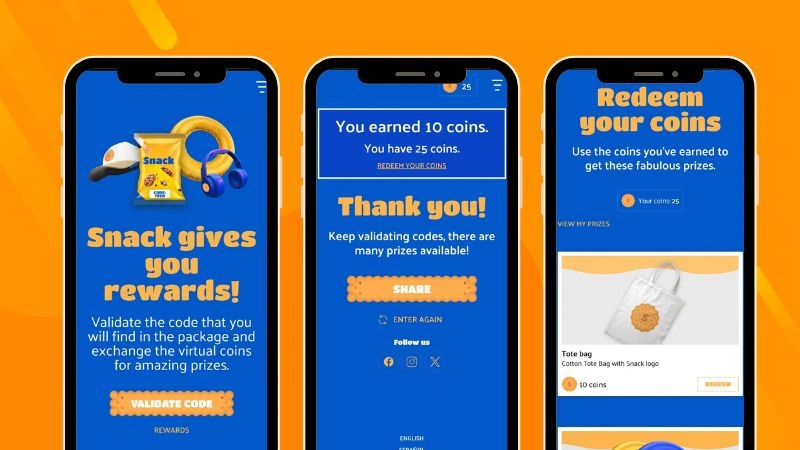
But, as we’ve already discussed, the economy isn’t everything. People don’t make purely rational decisions based on their budget. We’re emotional creatures, and we seek out emotional rewards.
David Feldman, an expert in airline and hotel loyalty programs, says that “the real currency of any loyalty program lies in its ability to drive changes in customer behavior.” Before you offer any kind of reward, emotional or economic, you have to know what changes you want to cause.
For example, according to Feldman, hotels usually have the same three goals for their customer loyalty programs: more frequent stays from repeat customers, higher spend, and brand affinity. Now, reward points might be a good tactic to encourage more frequent stays. But when it comes to brand affinity, emotional rewards are more effective.
“Ultimately, we want to get them to form an emotional attachment with us in order to progress to a state of true loyalty,” explains Feldman.
Why are emotional rewards so effective?
The beauty of emotional rewards is that they give you so many options. There are only so many ways that you can set up a reward points scheme. Economic rewards are pretty straightforward.
But there are infinite ways to evoke emotions. We have a lot of different feelings, and they can all promote different kinds of behavior.
The Retail Customer Experience recommends focusing on “rewards, recognition, and relevance”. Rewards are economic rewards. Recognition makes customers feel welcome and valued. And marketing relevance, based on your knowledge of the customer, is what builds true emotional loyalty.
But that’s not all! Entrepreneur Magazine points to other psychological factors that keep customers coming back. People enjoy a sense of novelty, identity or community. So you can offer emotional rewards in the shape of new and exclusive offers; building an identity around your brand, and making customers feel like they are part of a wider community.
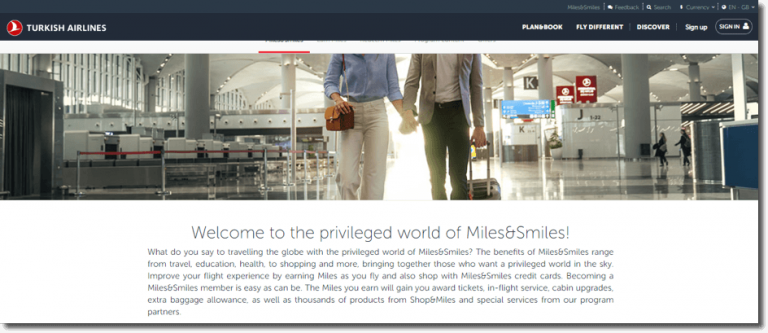
And the Harvard Business Review (HBR) has even more suggestions, including a sense of confidence, wellbeing, thrill, freedom, belonging, security, success, being one’s best self, being unique, or even protecting the environment.
That’s a lot of different emotional rewards to work with. Each emotion could be bent towards a different goal in your customer loyalty program.
And do emotional rewards work? Well, those same researchers from the HBR found that customers’ emotional attachment was twice as valuable to brands as customer satisfaction.
How to use emotional rewards in your customer loyalty program
Now for the real question: What do emotional rewards actually look like in practice?
As always, the answer depends on your brand, your customers, and your goals. But we can set out a few general guidelines and ideas.
Start by setting out your aims for your customer loyalty program; then go back and look through the emotional rewards we described above. Do any of them jump out at you? Perhaps you could add more personalization to your customer rewards, and offer more relevance. Maybe what your customers need is more of a thrill or a sense of community.
To get you started, I’ve looked at a couple of these ideas in more detail.
Personalization and customer loyalty
As we heard from the Retail Customer Experience, relevance is key to customer loyalty. Customers want to feel that you know them and understand their needs. Knowing your customers well also helps you to send out the right messages, and avoid irritating people with irrelevant marketing.
So how do you make your customer loyalty program relevant for each individual? Well, you’re going to need a lot of information. This is where your CRM system comes in. You should be tracking customer order histories, how they prefer to shop, how they prefer to communicate, and what their particular interests are.
If you’re still at the stage of gathering information, then you could run customer loyalty campaigns that collect data and offer relevant marketing at the same time. My favorite way to do this is with a Product Recommender. Customers answer some quick questions about their tastes and needs, you store the information, and they get personalized advice or offers in return.
Here is an example from BYHOURS, a platform that allows booking hotel rooms by the hour internationally. The brand launched a product recommender to promote its services.
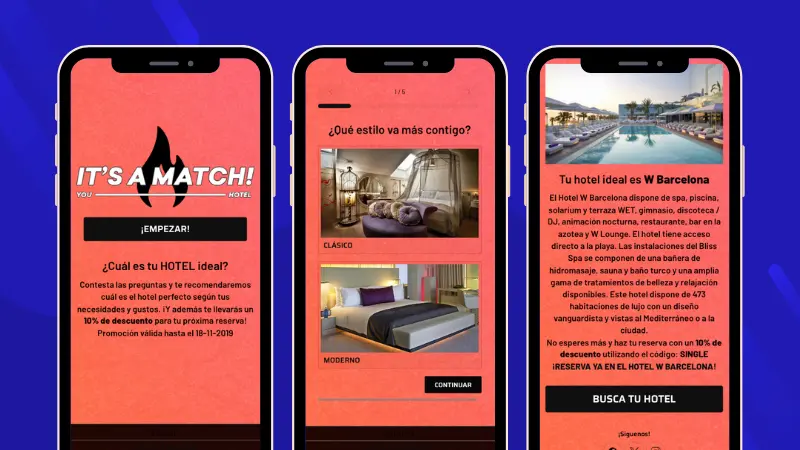
Participants answered questions about their preferences and tastes regarding hotels, and at the end of the questionnaire, the application displayed a personalized message recommending the ideal hotel. In addition to providing entertainment for customers, each participant received a discount on their next booking.
And what did BYHOURS get in return? They collected new contact information, conducted market research, and strengthened customer loyalty.
Community is an emotional reward
Never underestimate the power of the community for your customer loyalty program. When someone signs up for your CLP, they’re not just joining your brand. They’re joining the community of other customers.
Reminding people of this fact is a really powerful way to retain customers. And the community is, in itself, an emotional reward. We all like to feel part of something.
There are lots of ways to encourage a community around your brand! Here are just a few ideas:
- An exclusive email newsletter with offers that only members can access
- Create a brand blog and online discussion spaces so users can get informed, have a conversation about your brand, stay updated on current events, or learn about your product news.
- Create social media giveaways to reward your online community users and encourage engagement with your brand. You can give away products, discounts, courses or workshops, tickets, experiences, etc. Customers can participate in the giveaways in various ways: by commenting on posts, sharing photos using a hashtag, sharing the posts, etc.
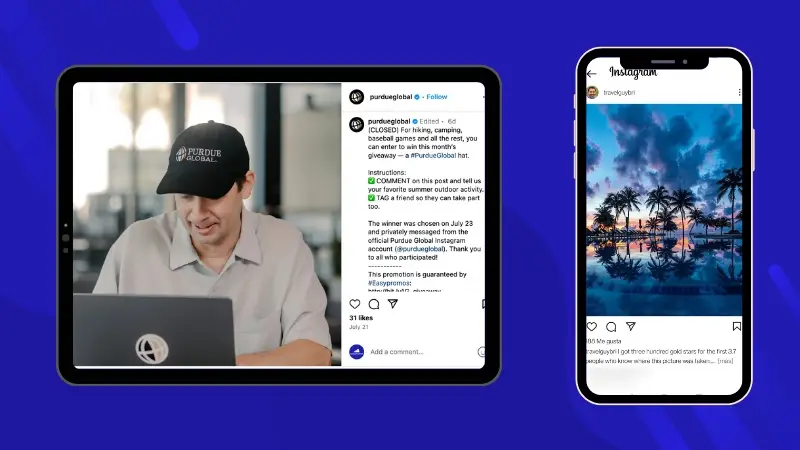
In the example above, you can see how two brands interact and start a conversation with their audience through social media giveaways. This makes the audience feel valued and rewarded and gives the brands a an increased presence and wider reach on Instagram.
Thrill and success as emotional rewards
The basic idea is to use the excitement of a game to create a bond with customers. When users compete, challenge each other, and win, they remember your brand much better. Additionally, if you reward users for participating, the level of satisfaction will be even higher.
The games don’t have to be very complicated as the game can be adapted to the type of audience. For example, a children’s brand could set up a word search or a puzzle to entertain the little ones at home. A supermarket brand could think of a prize wheel to turn shopping into a game for adults.
In the example below, the plumbing parts and fittings brand Jimten created a prize wheel to reward its customers. Users feel the excitement of participating, and the brand gets their contact information outside of social media or the store.
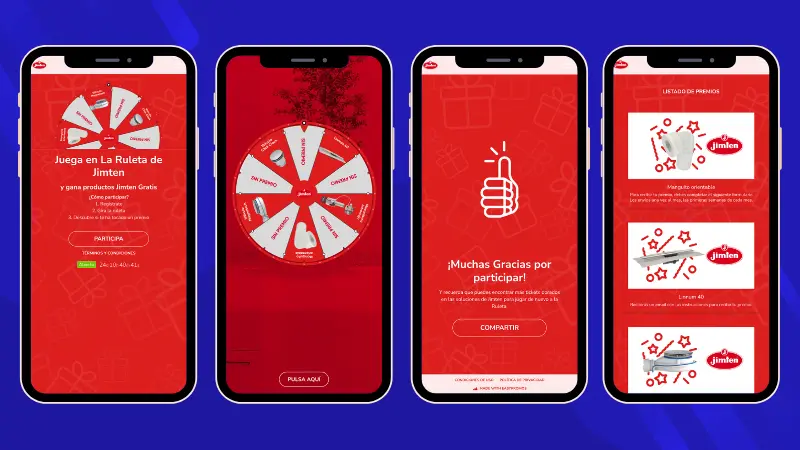
Whatever app you choose, the aim is to give your customers something fun to do. They’ll associate your brand with the sense of excitement and achievement they get from playing along.
Do you have some other examples of emotional rewards in customer loyalty programs? In case of suggestions, questions, and doubts you can always contact our Support Team!